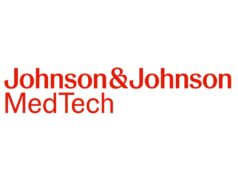
The DAWN trial results, presented at the European Stroke Organisation Conference (ESOC) by Tudor Jovin and Raul Nogueira, dramatically change the landscape for treatment of ischaemic strokes, writes Joseph Broderick.
The purpose of the study was to evaluate the hypothesis that thrombectomy using the Trevo device made by Stryker, plus medical management, would lead to superior clinical outcomes at 90 days as compared to medical management alone in appropriately selected patients experiencing an acute ischaemic stroke when treatment is initiated within 6–24 hours after time-last-seen-well. Patients were selected by a combination of clinical severity, age, and most importantly, a smaller core of severely ischaemic brain as measured by perfusion imaging using RAPID software.
The trial was stopped early because of overwhelming efficacy: a 36% absolute difference in functional independence at 90 days in favour of thrombectomy. For every 100 patients treated with endovascular therapy, 49 will have a less disabled outcome as a result of treatment, including 36 who will be functionally independent. The benefit was seen in those treated 6–12 hours and those treated 12–24 hours, although outcomes in those patients in the 12–24 hour time window were not as good as those treated earlier. The risk of symptomatic intracerebral haemorrhage (4.8% in the thrombectomy group vs. 3.2% in medical group) and stroke-related mortality (13% in thrombectomy group vs. 18% in medical group) was similar.
This trial illustrates the importance of physiological time as measured by imaging and clinical deficits in the treatment of ischaemic stroke, as compared to chronological time, particularly for those beyond six hours. Maybe the new mantra should be “physiological time is brain” rather than “time is brain”. In some patients, the severity of loss of blood flow may lead to irreversible infarction within 30-minutes or less, which may not be reversible by thrombectomy unless done within that time window. In other patients, collateral flow and less severely impaired blood flow, may allow successful treatment even at 24 hours as illustrated by the DAWN trial.
The trial will have substantial impact on clinical practice but unfortunately the proportion of patients in the 6–24 hour window who have ischaemic stroke with large artery occlusion and who would qualify for this therapy was not addressed by the trial. Screening logs of all stroke patients at referring hospitals were not part of the study design. The trial also emphasises the need for CT angiography/collateral flow and CT perfusion at community hospitals to determine which patients should be transferred to a comprehensive stroke centre for thrombectomy. Otherwise, a large volume of patients with severe strokes may be transferred to comprehensive stroke centre, the majority of which do not qualify for thrombectomy.
In summary, the DAWN trial represents a major advance in stroke therapy that will change practice but will also have a dramatic impact on stroke systems of care in the USA and other countries.
Joseph Broderick is professor of Neurology and Director of the University of Cincinnati Gardner Neuroscience Institute, Cincinnati, USA. He was the principal investigator of the IMS III trial.













